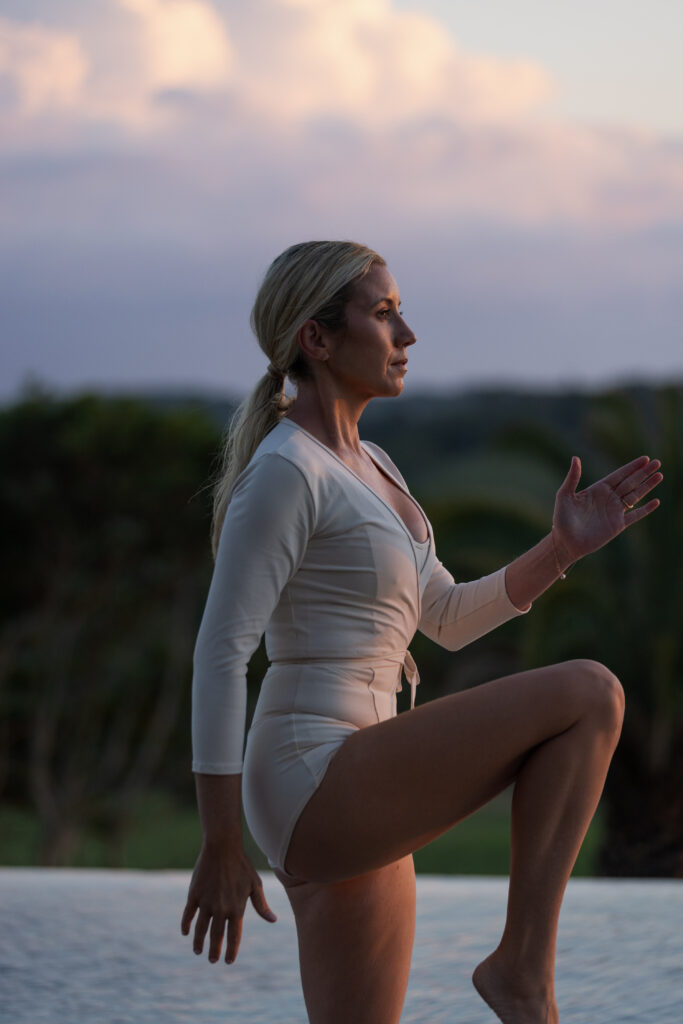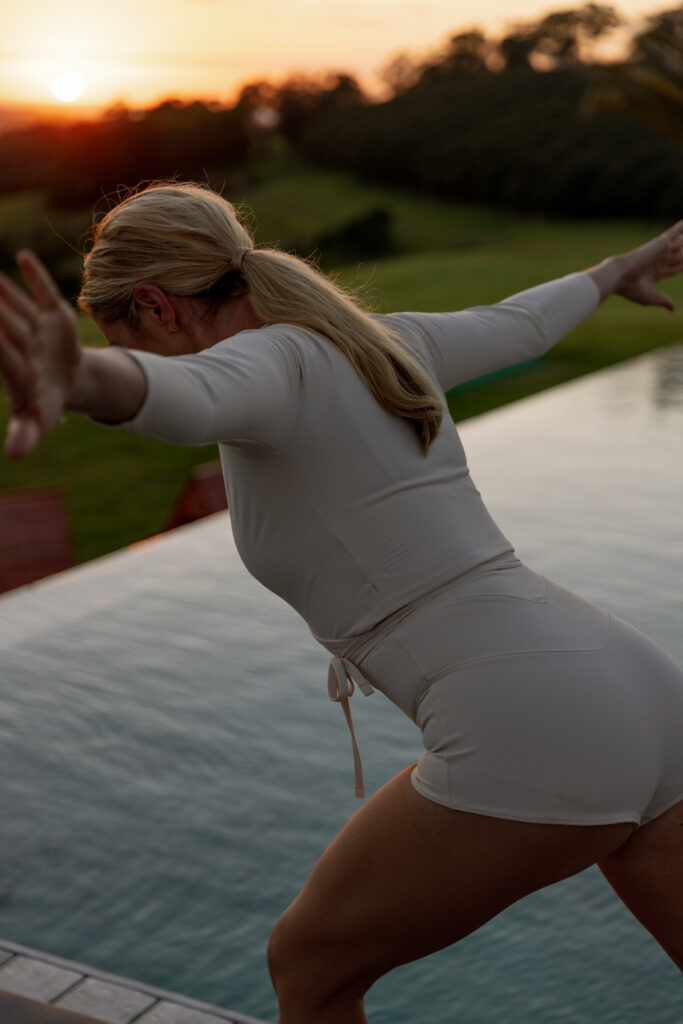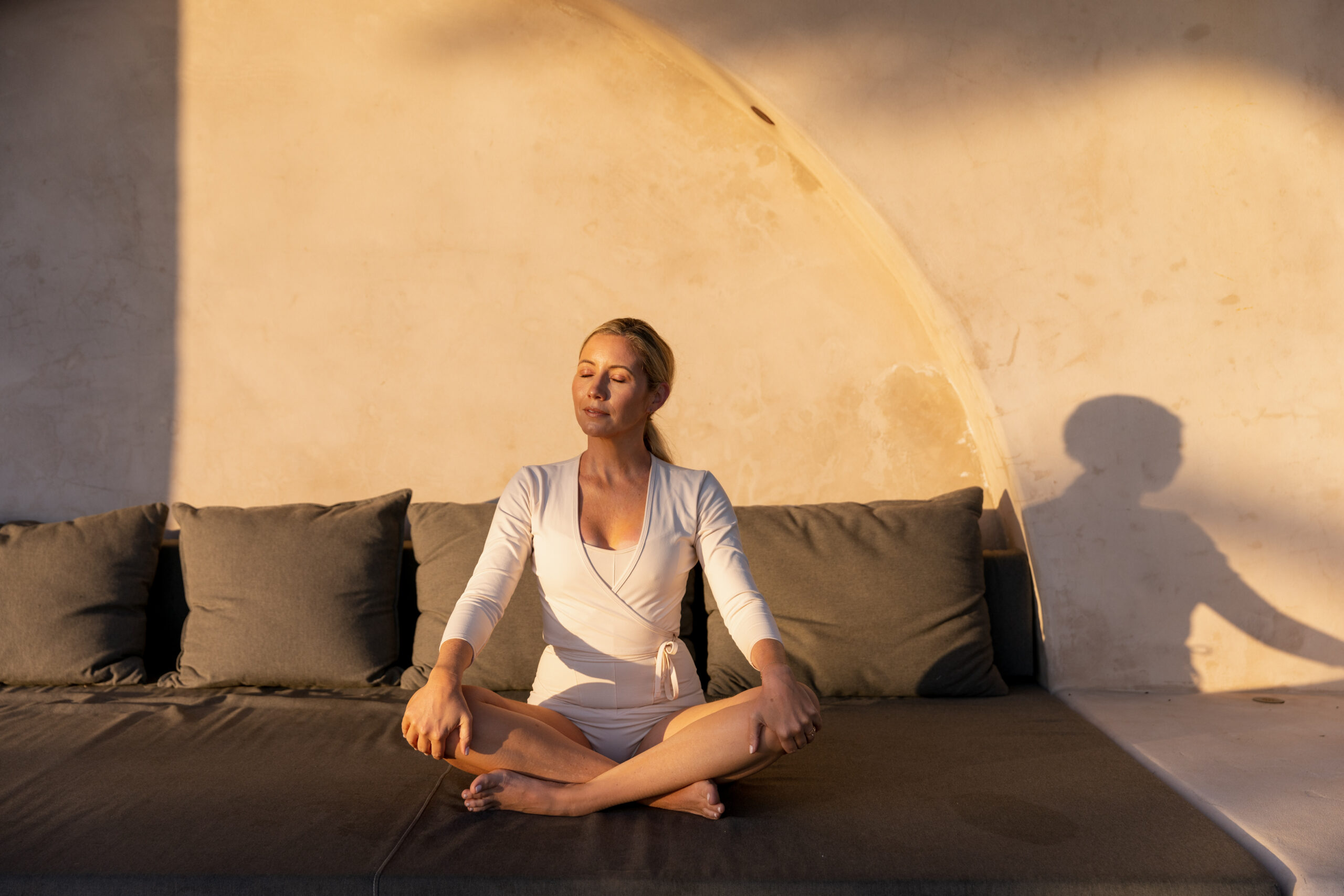Stress generally starts in our chest, gut and head (feeling a tightness in our chest, trouble breathing, a sinking feeling in our gut and noise in our head). Overtime, we start to hold this neglected and recurrent stress in our hips, neck and shoulders. This is a combination of built up stress, and also poor posture and overlooked lifestyle choices as a result of stress.
Pilates and specifically functional movement, helps to both prevent and relieve stress.
Traditional Pilates uses breathwork to improve the effectiveness of specific exercises.
Technically speaking, this specific combination of functional movement and breathwork (Pilates) trains your intercostal muscles (muscles that help you breathe), increasing your lung capacity and flexibility through your ribcage and increases the exchange of oxygen into carbon.
From a lifestyle perspective, this combination helps to calm the nervous system, improve your sleep quality and prevent rising cortisol levels (our stress hormone).
Focusing on your breathing naturally works to clear your mind – focusing on your breath helps switch off other areas of the body and mind that are overworking as a reaction to stress, be it a deadline at work, social pressures, personal challenges. Stress is a reaction. It’s how our bodies and minds react to these ‘stressors’ and regular, functional movement helps to both train 1. How we react and 2. How we deal with our reaction.
The powerful combination of movement and breathwork (finding your mind – body connection) requires deep focus, improves our concentration, attention, increases our heart rate, flexibility and mobility which all help to increase endorphins – our feel good, mood boosting chemicals.
Nestled into the psoas muscles (running from our lumbar spine through either groin controlling our hip flexion) are 1. the kidneys, responsible for filtering toxins in the body, and 2. adrenal glands, which control the fright, flight or freeze response.
This is where we begin to understand the body – mind – emotional connection.
The fight or flight response is our body’s natural reaction to perceived danger (physical, mental and emotional). When you’re under any kind of mental or emotional stress, your psoas muscle responds by contracting. Overtime, this develops a tightness and discomfort across our hips.
When we consider this link between our psoas muscles and flight or fight reaction to stress, we understand the concept of stress getting “trapped” in the hips or literally holding stress in our hips.
Having tight, restrictive hips compromises our entire functional alignment, posture and breathing – all factors that impact our body’s physical and mental capability to deal with stress.
Functional movement and stretching is medicine for releasing tight hips.

Try our Pelvis Challenge for 14-days of workouts to improve hip mobility, realign and balance your hips and pelvis.

Hips and Glutes 1 is my favourite workout for creating space around my pelvis and releasing any tension in my hips and glutes.





